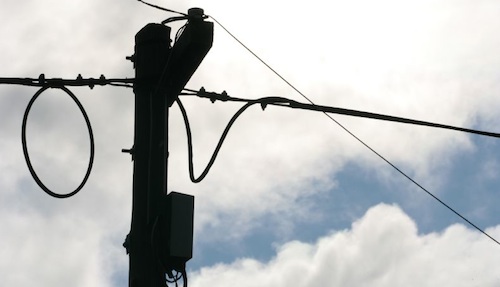Telkom is involved in a multibillion-rand project to increase the throughput of fixed-line broadband to speeds of up to 40Mbit/s. The plans also include dramatically upping the speed of entry-level broadband services and introducing video-on-demand (VOD) products, possibly from international providers such as Hulu, Netflix and Nangu.
In addition, the company is planning a trial using superfast fibre-optic cables from selected telephone exchanges, with the pilot project expected to kick off as early as 15 January 2012. Details about the fibre project remain sketchy, however.
TechCentral is privy to documents that show Telkom plans to install devices called multi-service access nodes, or MSANs, in its telephone exchanges and street-level distribution cabinets and to introduce very high-speed digital subscriber line version 2 (VDSL2) technology, which will dramatically increase the speeds it can provide over its legacy copper access network.
VDSL2 is theoretically capable of offering download speeds of up to 250Mbit/s over short lengths of copper (up to 500m) and up 50Mbit/s for distances of up to 1km.
Telkom has invested millions of rand in recent years bringing fibre closer to its customers — in many areas, it has built fibre to its street-level distribution cabinets — to offer faster access speeds to consumers over its copper network.
In terms of the plan, which is known as the NGNEC project, Telkom is proposing that by 2013/2014, the slowest access speed offered on its access network will be 1Mbit/s (from 384kbit/s now). By 2015/2016, this will have been increased to between 2Mbit/s and 4Mbit/s with speeds at the high end of 20Mbit/s and 40Mbit/s in selected areas.

Steven White
Under the NGNEC pilot, Telkom will offer three access speeds to consumers: 10Mbit/s, 20Mbit/s and 40Mbit/s from selected exchanges (affecting about 2% of its subscriber base), providing both capped and uncapped products. It also plans to trial voice-over-broadband products in both the consumer and business markets.
The documents show that Telkom is debating internally about whether or not to offer access to the NGNEC pilot project to rivals. It is weighing the regulatory impact of not doing so, including what bearing this might have on plans by the Independent Communications Authority of SA to force it to provide competitors with access to its copper-cable infrastructure through a regulatory intervention known as local-loop unbundling and also how the Competition Commission would view such a move.
Telkom appears to be concerned that “wholesaling” access to the new network would delay the launch of the pilot project. It says not offering wholesale access to rivals during the pilot would “place pressure on competitors”. Also, not doing so would prevent delays as the company would have to wait for “wholesale partners’ fair operational readiness”. However, allowing wholesale access would “discourage” competitors from building competing networks and would be the “least risky option with regards to the regulatory and competition authorities”.
The documents show that by 2013, Telkom wants to offer both subscription and transactional VOD services, which could pit the company against pay-TV operator MultiChoice, owned by Naspers, which has similar plans. MultiChoice already offers a satellite-based transactional VOD service called BoxOffice and has said it plans to offer VOD over the Internet, too.
In an interview with TechCentral in September, Steven White, Telkom’s executive for converged business services, revealed that the company was at an “advanced stage” of discussions with a number of local and foreign content providers with a view to providing VOD over its copper-cable network. He said at the time that Telkom was not in discussions with Netflix. “We’d love to have Netflix, but SA is not on their radar screen right now,” he said.
It’s not clear whether Telkom has signed any content agreements yet, but the documents show it is investigating the possibility of seeking exclusive SA distribution agreements with one or more “over the top” content providers. — Duncan McLeod, TechCentral
Image: Peter Baker


No comments:
Post a Comment